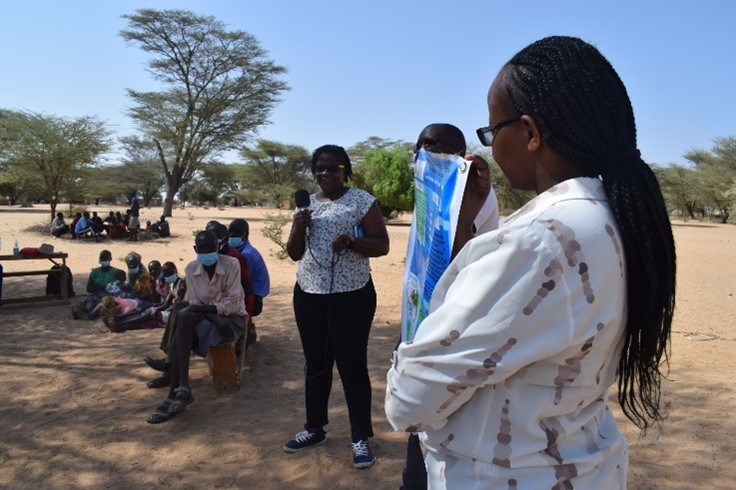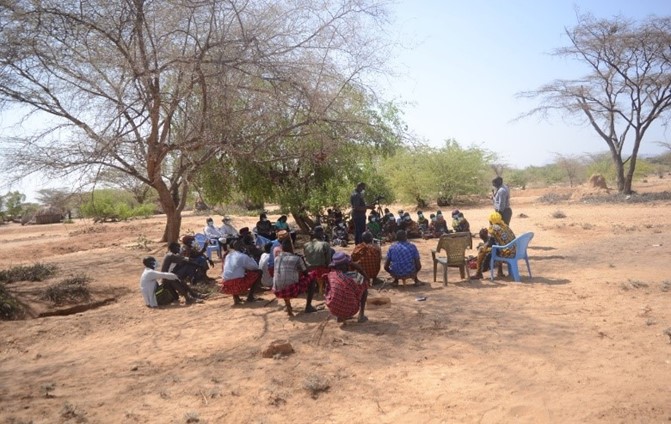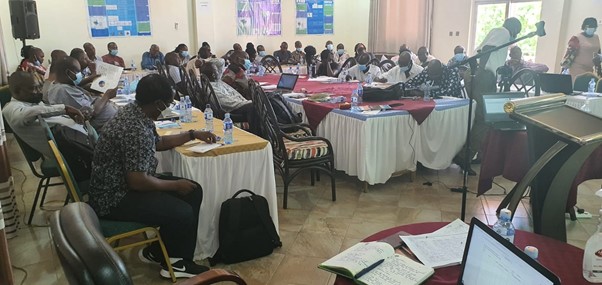By Prof. Stephen Rwigi
Small Research Project: Assessing Resilience of Drylands Communities to Shocks Associated with Rainfall Extremes Under Changing Climate and Landuse Conditions: Case of Turkana County, Kenya


Introduction
Our approach was based on inclusion and involvement of the key stakeholders in the whole research process. The stakeholders included those with the power to influence the use of the results (National and County government officials, policy makers), those who will use the results in implementing their mandates (NGOs, CBOs, development partners), and those who will be directly affected by the results (the vulnerable communities). We had two major stakeholder engagement activities. The first was during the SRP implementation in which we travelled to the study area and met with representatives of the National and County governments, NGOs, CBOs and the community (August 2021). In this phase, we introduced our research idea and sought their opinions and contributions, revised the proposal based on their suggestions, and collected primary data. The second activity took place during the no-cost extension period when we presented our results to the stakeholders for review and validation (March 2022).
Evidence of Bridging the Gap between Science and Policy
· The enthusiasm and overwhelming response in participating in the data collection activity through FGDs and KIIs for officials/policy makers/decision makers, and household survey (382 out of the target sample of 382) for the community indicated 100 % success rating in the mobilization and sensitization carried out at the beginning of the project. This points towards the understanding and acceptance of the project by the various stakeholders.
· The lively and enriching discussions during the three review and validation community meetings indicated meaningful engagement of the community in the process and a signal that the results of the research will be adopted and used by them.
· The tabling of additional recommendations, seen to be missing from the presented document, by the communities for consideration by the County Government alongside the recommendations from the study points to acceptance of the results and the desire to get relevant and meaningful results for their contexts, and a further indication that the results will be adopted and used by the communities.
· The insightful questions, comments and discussions at the County Steering Group (CSG) meeting demonstrated the seriousness and importance attached to water issues in the County. All the key sectors, including livestock, water and agriculture, were keen to see recommendations relevant to them. The representatives of these sectors indicated that they will use the information contained in our document in the development of the upcoming County Integrated Development Plan (CIDP)
· The validation of the findings as the true picture on the ground by the CSG members, and the acceptance of the report with amendments from the floor is a key indicator that the findings from the research will be used to inform policy and the development of the upcoming CIDP
Policy Makers in the CSG Meeting
The County Steering Group (CSG) meeting was attended by organisations in both National and County government levels as well as development partners. National Government organisations included: Kenya Meteorology Department (KMD), Water Resource Authority (WRA), National Environment Management Authority (NDMA), Kerio Valley Development Authority (KVD), Ministry of Education, and Kenya Forest Research institute (KEFRI) while the County Government Departments included: Water, Agriculture, Livestock, Health, Education, Disaster Management, Economics, and the Governor’s Office. NGOs represented in the CSG included: International Rescue Committee (IRC), Mary Meals, Kenya Red Cross, Catholic Relief Services, Caritas Lodwar, Practical Action, United Nations Children Fund (UNICEF), Food Agriculture Organization (FAO), and World Food Programme (WFP).
Presentation, Review and Validation of Results by the Community and CSG Members
For the community meetings:
· We synthesized the results and summarized them into two posters: one from biophysical archived data and the other from socio-economic primary data.
· We identified and briefed an interpreter on the results to familiarize him with what we were to present.
· We then invited each of the three communities to an open, under trees meetings in the study sites.
· The meetings started with introductions followed by participation in a traditional song and dance (edong’a) as an ice breaker and familiarization exercise.
· The two strands of research were then presented, drawing parallels between the results from the archived data and those collected from the community. This aroused interest from the communities and led to animated comparison discussions.
· We finalized with recommendations and way forward sessions plus a final song and dance
For the County Steering Group meeting:
- We synthesized the results and summarized them into three posters: one from biophysical archived data, the second from socio-economic primary data, and the other integrating the whole process.
- Folders were prepared for each guest, in which there were a policy brief, a research brief and a concept note explaining the need for all the stakeholder engagement meetings.
- The meeting was held in a hotel in Lodwar town.
- PowerPoint presentations were made covering the biophysical and socio-economic aspects together with the integration.
- Discussions, with questions and answers, followed the PowerPoint presentations leading to amendments that enriched the report.
- The report was then put to a vote: accept or reject. The result was a resounding accept with the amendments raised on the floor.


